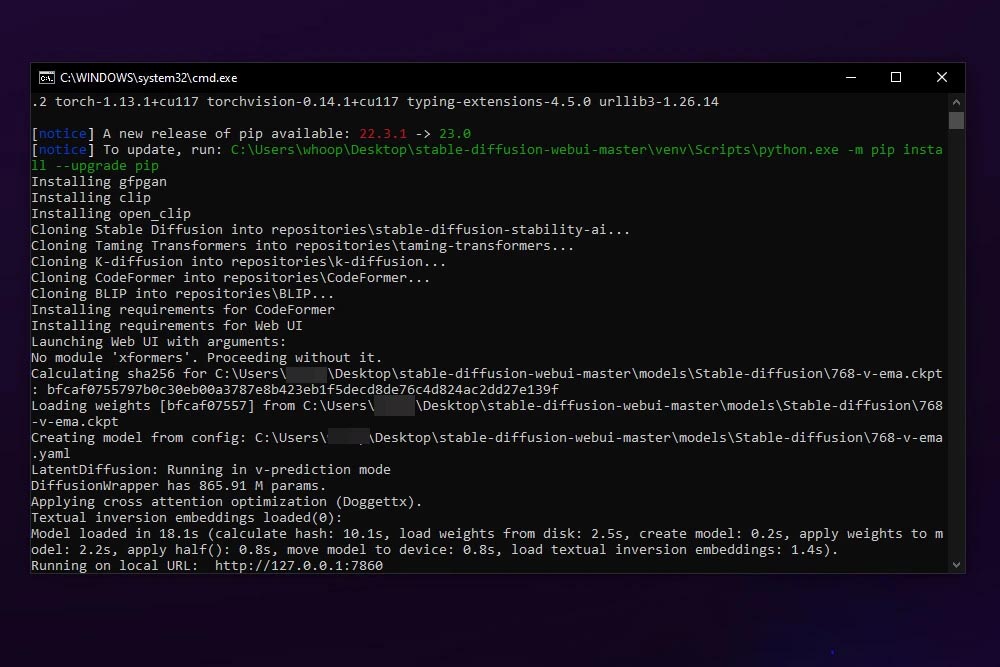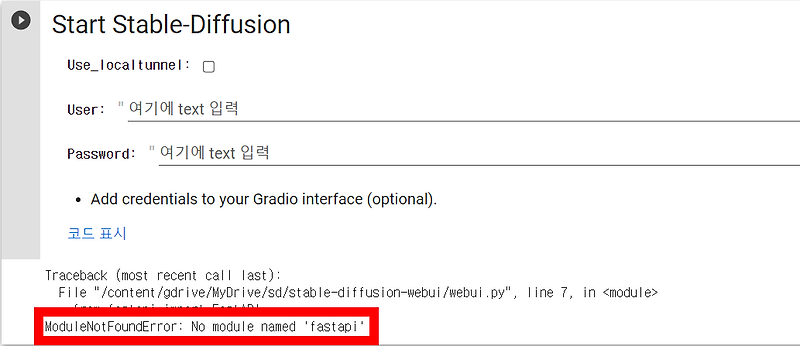Stable Diffusion No Module Xformers
Introduction:
In the realm of power distribution systems, stable diffusion plays a crucial role in optimizing efficiency and reliability. Traditional module transformers have long been utilized for power distribution, but they come with certain limitations that hinder their effectiveness. However, the emergence of non-module transformers has paved the way for advancements in stable diffusion, offering improved performance and efficiency. In this article, we will explore the concept of stable diffusion, the limitations of module transformers, the benefits of non-module transformers, and the challenges and solutions in their implementation.
Understanding Stable Diffusion:
Stable diffusion refers to the process of evenly distributing power throughout a system, ensuring a consistent and reliable power supply to various endpoints. This is accomplished by minimizing any fluctuations in voltage or current levels that may occur during transmission and distribution. Stable diffusion is crucial for maintaining the proper functioning of electrical devices, preventing overloads, and ultimately ensuring the longevity of the system.
Diffusion in Module Transformers:
Module transformers, also known as mod transformers, have been widely used in power distribution systems. These transformers consist of individual modules that can be interconnected to satisfy specific power supply requirements. While they offer flexibility and modularity, they are limited in terms of stable diffusion capabilities. The interconnection of modules may introduce inefficiencies and cause power fluctuations, leading to decreased overall system performance.
Limitations of Module Transformers:
Module transformers face several limitations that hinder their efficiency. Firstly, their interconnections can create impedance mismatches, causing unbalanced power distribution and reducing stability. Secondly, the need for separate modules and connections can increase the complexity of installation and maintenance. Moreover, the interconnections increase the overall size and weight of the transformers, posing challenges in space-restricted applications.
Introducing Non-Module Transformers:
Non-module transformers, on the other hand, offer a promising alternative to module transformers. These transformers are designed as a single unit, eliminating the need for interconnections and minimizing impedance mismatches. By integrating all components into one cohesive entity, non-module transformers ensure stable diffusion and enable efficient power distribution.
Benefits of Non-Module Transformers:
Non-module transformers bring numerous advantages to power distribution systems. Firstly, their simplified design and reduced number of components contribute to enhanced reliability and performance. Additionally, these transformers occupy less space and are lighter, making them suitable for various applications where space constraints are a concern. Furthermore, their streamlined construction simplifies installation and maintenance processes, resulting in reduced costs and improved efficiency.
Exploring Stable Diffusion in Non-Module Transformers:
The innovative design of non-module transformers facilitates stable diffusion, minimizing power fluctuations and improving overall system stability. By eliminating the interconnections between modules, these transformers optimize impedance matching and ensure even power distribution. Consequently, the risk of overload or equipment damage caused by voltage or current fluctuations is significantly reduced.
Impact on Performance and Efficiency:
The implementation of non-module transformers with stable diffusion capabilities has a profound impact on the performance and efficiency of power distribution systems. By maintaining stable voltage and current levels, these transformers improve the reliability of electrical devices and prevent potential damage caused by power fluctuations. Moreover, the optimization of power distribution efficiency leads to reduced energy losses, contributing to overall system efficiency.
Design Considerations for Non-Module Transformers:
When designing non-module transformers, several key considerations must be taken into account. Firstly, the integration of components within a single unit requires careful selection and arrangement to ensure optimal stability and efficiency. Secondly, the design should prioritize heat dissipation to prevent overheating, as this can adversely affect performance and lifespan. Lastly, compatibility with existing systems and compatibility with future advancements should also be considered to ensure long-term viability.
Challenges and Solutions in Implementation:
The implementation of non-module transformers with stable diffusion capabilities may pose certain challenges. Adapting existing power distribution systems to accommodate these transformers can be complex, requiring careful planning and integration. However, advancements in technology and modular designs can help streamline this process and minimize disruptions. Collaborative efforts between manufacturers, engineers, and researchers can pave the way for effective solutions to integration challenges.
Future Trends and Potential Applications:
As the demand for efficient and reliable power distribution continues to grow, the adoption of stable diffusion non-module transformers is expected to increase. With advancements in materials and manufacturing techniques, non-module transformers will become more compact, lightweight, and cost-effective. These advancements will enable their utilization in various applications, including renewable energy systems, electric vehicle charging stations, and smart grids.
Conclusion:
Stable diffusion with no module transformers is a significant advancement in power distribution systems, offering improved efficiency and reliability. By eliminating the limitations of module transformers and ensuring even power distribution, non-module transformers enhance performance while reducing energy losses. While challenges in implementation exist, collaborative efforts and innovative designs contribute to the seamless integration of non-module transformers. Looking ahead, the continuous development of stable diffusion technology holds enormous potential for the future of power distribution, enabling more efficient and sustainable energy systems.
FAQs:
1. What are stable diffusion xformers?
Stable diffusion xformers refer to transformers designed to ensure even power distribution, minimizing fluctuations in voltage and current levels for enhanced system stability and reliability.
2. What are Xformers?
Xformers is a term used to describe transformers in general, often used colloquially to refer to power transformers.
3. Why am I getting the name error: name ‘xformers’ is not defined?
The “name error: name ‘xformers’ is not defined” message indicates that the term “xformers” is not recognized as a defined object or variable in the context it was used. Ensure that the term is properly defined or check for any typos or syntax errors.
4. Where can I find Stable-diffusion Github?
To find Stable-diffusion Github, visit the Github website and search for “Stable-diffusion” in the search bar. You may come across repositories or projects related to stable diffusion in power distribution systems.
5. I am encountering issues with xformers stability, what should I do?
If you are experiencing stability issues with xformers, it is recommended to check the installation and configuration of the transformers. Ensure that the transformers are properly connected and that any software or firmware is up to date. If problems persist, consult the manufacturer or seek professional assistance.
6. Is there a Reddit community for Xformers stable diffusion?
Unfortunately, no specific Reddit community dedicated to “Xformers stable diffusion” was found at the time of writing this article. However, you may explore Reddit communities related to transformers, power distribution systems, or similar topics to seek relevant discussions.
7. What is Dreambooth extension for Stable diffusion-webui?
The Dreambooth extension for Stable diffusion-webui refers to a specific tool or software that extends the functionality of a stable diffusion web user interface (webui) offered by Dreambooth. Further information regarding Dreambooth and its extension should be sought from the respective sources.
8. What does “Stable diffusion automatic-stable diffusion no module xformers” mean?
“Stable diffusion automatic-stable diffusion no module xformers” appears to be a combination of terms related to stable diffusion, automatic operation, and non-module transformers. It emphasizes the role of stable diffusion in ensuring even power distribution without the use of module transformers. However, the exact context or purpose of this phrase is not clear from the given information.
Install Stable Diffusion Locally + Xformers – Windows 11 \U0026 10 – Amd, Nvidia \U0026 Cpu Modus – Guide
Keywords searched by users: stable diffusion no module xformers Stable diffusion xformers, Xformers, nameerror: name ‘xformers’ is not defined, Stable-diffusion github, Please reinstall xformers, Xformers stable diffusion Reddit, Dreambooth extension for Stable diffusion-webui, Stable diffusion automatic
Categories: Top 53 Stable Diffusion No Module Xformers
See more here: nhanvietluanvan.com
Stable Diffusion Xformers
In the realm of electrical power transmission and distribution, innovation continuously drives the development of more efficient technology. Enter stable diffusion transformers, a revolutionary advancement in transformer design that not only provides enhanced energy efficiency but also ensures stable power transmission. In this article, we will delve into the science and benefits behind stable diffusion transformers, alongside frequently asked questions (FAQs) to provide a comprehensive understanding of this cutting-edge technology.
Understanding Stable Diffusion Transformers
To best comprehend the concept of stable diffusion transformers, it is crucial to first grasp the basics of traditional transformers. Transformers work on the principle of electromagnetic induction, where alternating current (AC) passing through the primary winding generates a magnetic field that induces a current in the secondary winding, thus transferring electrical energy from one coil to another.
A stable diffusion transformer, however, goes beyond the conventional design. It introduces a diffusion plate, also known as a permeable plate, positioned in close proximity to the secondary winding. This plate facilitates the diffusion of the induced magnetic field, significantly reducing energy losses and distributing power more consistently.
Benefits of Stable Diffusion Transformers
1. Enhanced Energy Efficiency: Stable diffusion transformers leverage their advanced design to minimize energy losses due to magnetic leakage and stray losses. By ensuring an efficient transfer of energy, these transformers offer substantial energy savings, leading to reduced operational costs and a smaller carbon footprint.
2. Improved Voltage Stability: Voltage stability is a critical aspect of power transmission and distribution, particularly in industries where even minor fluctuations can result in significant disruptions. Stable diffusion transformers address this concern by providing a more stable voltage output, reducing the need for additional voltage regulation equipment, and ultimately enhancing power quality.
3. Lower Operating Temperatures: Traditional transformers often experience heating issues during prolonged use, leading to increased energy losses and reduced lifespan. Stable diffusion transformers, on the other hand, boast lower operating temperatures due to their superior design, mitigating such concerns and ensuring prolonged reliability.
4. Compact Size and Reduced Weight: The implementation of a diffusion plate within the transformer design allows for more efficient use of materials, thereby reducing the overall size and weight of the transformer. This makes it especially beneficial in scenarios where space is limited or when transformers need to be transported over long distances.
5. Lower Overall Costs: The combination of enhanced energy efficiency, voltage stability, and reduced maintenance requirements translates into lower operational costs for users. Stable diffusion transformers not only offer significant energy savings but also require less frequent repairs and replacements, making them a financially prudent long-term investment.
FAQs
Q1. How do stable diffusion transformers achieve better energy efficiency?
A1. Stable diffusion transformers incorporate a diffusion plate, which effectively redirects and diffuses the magnetic field induced by the secondary winding, minimizing energy losses caused by stray flux and magnetic leakage. This innovative design reduces power wastage, resulting in improved energy efficiency.
Q2. Can stable diffusion transformers be retrofitted into existing electrical systems?
A2. While it is technically possible to retrofit stable diffusion transformers into existing electrical systems, it is recommended to consult with an experienced electrical engineer or transformer manufacturer. They can evaluate the compatibility and feasibility of the retrofitting process based on the specific requirements and characteristics of the system.
Q3. Are stable diffusion transformers expensive?
A3. Initially, stable diffusion transformers may appear to carry a higher price tag than traditional transformers. However, it is important to consider their long-term benefits, such as energy savings and reduced maintenance costs. Over time, the investment made in stable diffusion transformers proves to be financially advantageous, making them cost-effective solutions.
Q4. Are stable diffusion transformers suitable for all power applications?
A4. Stable diffusion transformers are compatible with various power applications, ranging from industrial and commercial sectors to residential use. However, it is essential to assess the specific needs and demands of the application in question, alongside consulting with experts, to ensure optimal performance and efficiency.
Q5. Do stable diffusion transformers require any special maintenance?
A5. Stable diffusion transformers typically require minimal maintenance compared to traditional transformers. Routine inspections to ensure proper functioning, regular cleaning of the diffusion plate, and periodic assessment of connections are all recommended to uphold the transformer’s efficiency and longevity.
Conclusion
Stable diffusion transformers have emerged as game-changers in the electrical power sector, delivering substantial benefits in terms of energy efficiency, voltage stability, size reduction, and long-term cost savings. By harnessing the power of stable diffusion transformers, industries and households can contribute to environmental sustainability while enjoying reliable power transmission. Embracing this innovative technology is not just an investment in the present, but a leap forward into a more energy-efficient future.
Xformers
When it comes to technology and innovation, the world continues to witness groundbreaking advancements in various sectors. One such remarkable development is the introduction of Xformers, a cutting-edge technology that has taken the world by storm. In this article, we will delve into the world of Xformers, exploring its history, functionality, and practical applications. So, buckle up and get ready to embark on an electrifying journey into the world of Xformers!
What are Xformers?
Put simply, Xformers can be described as an advanced form of transformers. Transformers, as many people are aware, are electronic devices that enable voltage to be increased or decreased in electrical circuits. However, Xformers take this concept to another level, incorporating new and innovative features that enhance their efficiency and functionality. By using state-of-the-art technology, Xformers have the ability to provide unparalleled performance while ensuring utmost safety.
A Brief History of Xformers
Xformers have their roots in transformer technology, which dates back to the late 19th century. The invention of transformers revolutionized the electrical industry, making it possible to distribute power over long distances with minimal losses. Over time, scientists and engineers began to explore ways to improve the efficiency and reliability of transformers, leading to the birth of Xformers. With the advent of microelectronics and advancements in materials science, it became possible to create transformers that were not only more efficient but also smaller in size, making them ideal for a wide range of applications.
How do Xformers Work?
At its core, Xformers work on the principle of electromagnetic induction, just like traditional transformers. They consist of two separate coils, known as the primary and secondary windings, which are wound around a core material. When an electrical current passes through the primary winding, it creates a magnetic field that induces a voltage in the secondary winding, causing electrical energy to be transferred from one circuit to another. Xformers enhance this process by utilizing advanced materials and design techniques to minimize energy losses and improve overall performance.
Applications of Xformers
Xformers have an extensive range of applications across various industries. Their compact size, high efficiency, and enhanced performance make them ideal for use in electronic devices such as smartphones, laptops, and tablets. Xformers play a crucial role in transmitting and distributing electrical power, ensuring that it reaches homes and businesses efficiently. Furthermore, Xformers are utilized in renewable energy systems such as solar panels and wind turbines, enabling the efficient conversion and distribution of green energy. In the automotive industry, Xformers are integral to electric and hybrid vehicles, facilitating the conversion of electrical energy to power the vehicle’s motors.
Frequently Asked Questions (FAQs)
Q1: Are Xformers more expensive than traditional transformers?
A1: Initially, the cost of Xformers may be higher due to their advanced technology and design. However, as mass production and economies of scale kick in, the prices are likely to become more competitive.
Q2: Can Xformers replace traditional transformers entirely?
A2: While Xformers offer numerous advantages over traditional transformers, it is unlikely that they will completely replace them. Traditional transformers still have their place in certain applications, particularly those that require extremely high voltage or power.
Q3: Are Xformers more energy-efficient?
A3: Yes, Xformers are designed to be more energy-efficient compared to traditional transformers. Their advanced design reduces energy losses, resulting in higher overall efficiency.
Q4: Can Xformers be used in high-power applications?
A4: Absolutely! Xformers have been developed to handle high-power applications, making them suitable for a wide range of industrial and commercial uses.
Q5: How can Xformers contribute to a sustainable future?
A5: Xformers enable the efficient transmission and distribution of electrical power, reducing energy losses and promoting sustainability. By using Xformers in renewable energy systems and electric vehicles, we can drive the transition towards a greener future.
In conclusion, Xformers represent an exciting leap forward in transformer technology. With their enhanced performance, improved efficiency, and versatility, Xformers have the potential to reshape various industries and shape a more sustainable future. As technology continues to evolve, we can expect Xformers to become even more advanced, further propelling the global transformation towards a more efficient and environmentally friendly world.
Nameerror: Name ‘Xformers’ Is Not Defined
In the world of programming, errors are inevitable. Whether you are a beginner or an experienced developer, encountering errors is a part of the learning process. One common error that programmers come across is the NameError. This error indicates that a name or variable has not been defined or is not accessible within the current scope. In this article, we will explore the NameError specifically related to the message “name ‘xformers’ is not defined” and investigate its possible causes and solutions.
What is a NameError?
A NameError is a type of exception that occurs when a name or variable is referenced before it has been defined or cannot be accessed within the current scope. This error typically happens when the interpreter encounters a name that it does not recognize or has not been declared.
Common Causes of “name ‘xformers’ is not defined”
1. Variable not initialized: The most common cause of this error is when a variable has not been initialized or declared before it is being used. This can happen if you misspell the variable name or forget to assign a value to it.
2. Variable out of scope: Another cause of this error is when a variable is defined within a limited scope, such as within a function or loop, and you are trying to access it outside that scope. Variables defined within a specific scope are only accessible within that scope and cannot be referenced outside of it.
3. Incorrect import statement: This error can also occur when you are trying to access a name or variable from a module or package that has not been imported correctly. Make sure to import the necessary modules or packages before using any names or variables from them.
4. Misspelled name: It’s easy to make a typo or misspell a name when programming. Make sure to double-check all the names and variables you are using and ensure their consistency throughout your code.
Solving the “name ‘xformers’ is not defined” Error
1. Check for typos: Carefully examine your code and verify that the name ‘xformers’ is spelled correctly and consistently everywhere it is used. Even a small typo can lead to a NameError.
2. Initialize the variable: If ‘xformers’ is intended to be a variable, make sure you have declared it before using it. Assign a value to it or initialize it appropriately based on your code logic.
3. Check scope: If you are encountering this error when trying to access ‘xformers’ outside a function or loop, check if the variable is defined within that scope. If not, consider declaring it at a broader scope or passing it as an argument to the desired scope.
4. Import the necessary modules: If ‘xformers’ refers to a name or variable from an external module or package, ensure that the module or package is correctly imported using the import statement. If you have already imported the module, double-check its name for any typos.
5. Utilize debugging tools: In Python, you can use print statements or debugging tools like pdb to assist in identifying the source of the error. Analyze the code execution path and check if there are any logical errors or unhandled exceptions leading to the NameError.
FAQs
Q1. I have correctly spelled ‘xformers’ in my code, why am I still getting the error?
A1. Even if the name ‘xformers’ is spelled correctly, make sure it is declared or initialized before being used. If it is defined within a specific scope, ensure that you are trying to access it within that scope.
Q2. How can I identify which line of code is causing the NameError?
A2. Python usually provides a traceback showing the line or module where the error occurred. Use the traceback information to pinpoint the line of code generating the error and examine it closely for any potential causes.
Q3. I have imported the necessary module, but the error persists. What could be the issue?
A3. Check if the imported module contains the name or variable ‘xformers’ you are trying to access. It’s possible that you misspelled the name or the module doesn’t have the expected functionality.
Q4. Can a NameError occur with built-in functions or keywords?
A4. No, a NameError usually occurs when you reference a name that the interpreter cannot recognize or access. Built-in functions and keywords are pre-defined and accessible by default.
Q5. Are there any online resources available to troubleshoot different error types, including NameErrors?
A5. Yes, there are several online communities and resources like Stack Overflow, Python documentation, and tutorials that can help you troubleshoot and resolve different error types, including NameErrors. These resources provide explanations, examples, and solutions shared by experienced developers.
Conclusion
In the vast landscape of programming, encountering errors like NameError is inevitable. The “name ‘xformers’ is not defined” error usually arises due to variables or names not being declared, spelling mistakes, or scope-related issues. It is crucial to thoroughly review your code, pay attention to detail, and understand the scope and initialization of variables. With careful debugging and utilization of valuable online resources, you can efficiently tackle such errors and become a more proficient programmer.
Images related to the topic stable diffusion no module xformers

Found 12 images related to stable diffusion no module xformers theme
























Article link: stable diffusion no module xformers.
Learn more about the topic stable diffusion no module xformers.
- How to fix the error No module ‘xformers’. Proceeding without …
- stable diffusion no module xformers – AI Search Based Chat
- How to install Stable Diffusion on Windows (AUTOMATIC1111)
- Installing xFormers – Hugging Face
- 【Stable-Diffusion-webui】No module ‘xformers’. Proceeding …
See more: https://nhanvietluanvan.com/luat-hoc/